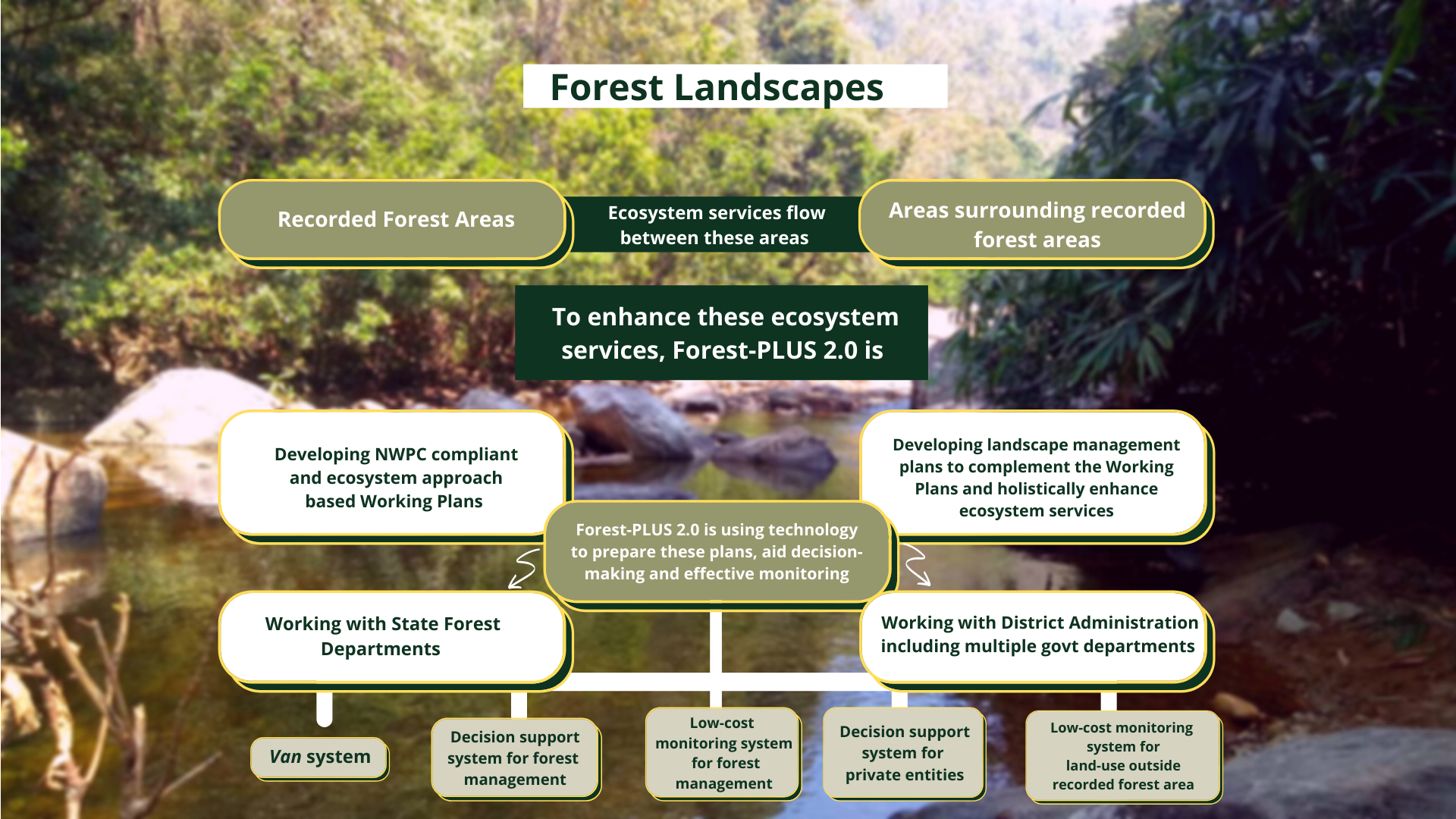To Strengthen Ecosystem-Based Management of Forest Landscapes

Major Goals
1. Increase the application of management planning processes on public and private lands in forest landscapes
2. Improve the collection, management and application of information needed in land management decision-making; and
3. Enhance the use of innovative tools and technologies in managing and monitoring forest landscapes
What is Ecosystem Approach to Forest Management?
Ecosystem Approach to Forest Management (EAFM) is a paradigm shift in the modern forestry sector that focuses on environmental stability, biodiversity monitoring and management, restoration of ecological balance in degraded areas, protective functions of forest resources and socio-economic benefits based on non-timber forest products. EAFM advocates for forest conservation, utilization, and regulation by holistically managing forests in an integrated manner to ensure the management of all components supporting sustainable use of forest resources.
In India, the Ministry of Environment and Forest & Climate Change (MoEFCC) has adopted policies that support promotion of an integrated approach towards conservation and maximization of provisioning, regulating, cultural and supporting ecosystem services through EAFM. The National Working Plan Code (NWPC), passed in 2014, allows officials to sustainably manage, conserve and utilize forest resources and to bring uniformity in forest management planning across the country. The NWPC is people-centric and oriented towards the sustainable provision of goods and services from natural and managed forests.
Forest-PLUS 2.0 program is building the capacity of the State Forest Departments (SFDs) in Bihar, Kerala and Telangana by supporting the preparation of Working Plans and development of tools to support data collection and aid decision-making to improve forest management. Forest-PLUS 2.0 has assisted the State Forest Departments to prepare Working Plans for three divisions: Thiruvananthapuram Forest Division in Kerala (Thiruvananthapuram and Kollam Districts), Medak Forest Division in Telangana (Medak District) and Gaya Forest Division in Bihar (Gaya and Jehanabad Districts).
The three Forest-PLUS 2.0 landscapes include both public and private lands that cover a diversity of land uses, management regimes, and ownership structures. To enhance EAFM, the program is also supporting the development of a landscape management plans for the lands outside recorded forest areas.
Also, to create a more equitable and inclusive environment around forest management, the program has documented and addressed gender roles and constraints across work streams. The program has introduced gender sensitization training in State Forest Departments and is providing training aimed specifically at developing women leadership in the forestry sector.
Highlights
1. The selection of the three forest divisions were made based on the need for preparation of a model Working Plan according to NWPC 2014. Accordingly, Forest-PLUS 2.0 program assisted the State Forest Departments in the preparation of Working Plans of the three divisions: Thiruvananthapuram Forest Division in Kerala (Thiruvananthapuram and Kollam Districts), Medak Forest Division in Telangana (Medak District) and Gaya Forest Division in Bihar (Gaya and Jehanabad Districts).
2. The program is working to improve Forest Management through development of innovative tools and techniques. The Forest-PLUS 2.0 team assisted SFD staff in comprehending the use of Van system (integrated mobile app and web portal) for collecting data through field validation, preparation of thematic maps, and data analysis.. Training sessions on Van system use and gender-inclusive forestry practices were held for Working Plan preparation.
3. A Low-Cost Monitoring System comprising a web portal and mobile phone apps has been developed for validation of change detection strata. The app initially developed for Gaya and Medak Forest Division can help detect changes in impacts of plantation activities on biodiversity (floral and faunal), contribution of plantations to improvements in regional hydrology and carbon sequestration. The tool can also help assess the extent of involvement of local communities in forestry activities and the impact of forestry activities on their livelihoods.
4. Further, the program has also developed a Decision Support System (DSS) for Forestry (DSS-Forestry) to support officials to take improved decisions for managing their forest ecosystems. The DSS-Forestry is a web-based information and analytical system which collects, organizes, analyses data on forestry and land use on a single platform. This digital tool incorporates environmental, economic, administrative, and social aspects of forest management in its design to provide integrated advisory and aid decision making with a focus on conservation and restoration of the forest ecosystem.
5. A traceability system is being developed for Kerala State Forest Department to help them to digitize the transit permit system for timber harvested from private land and track & trace the movement of timber using QR code system.

